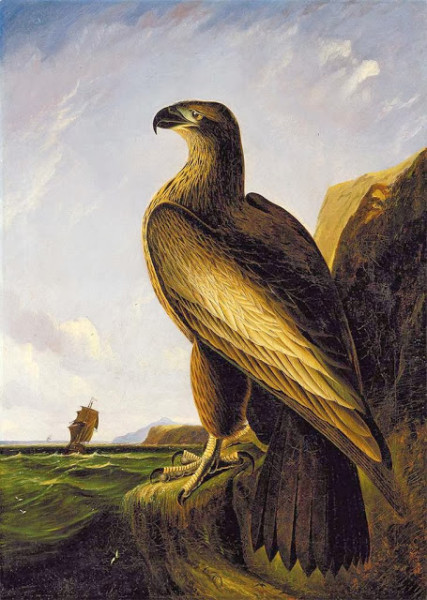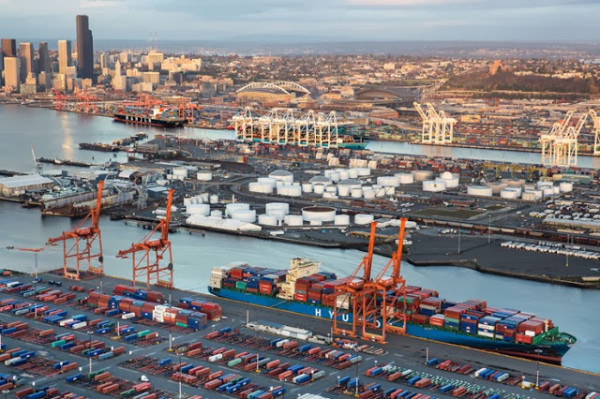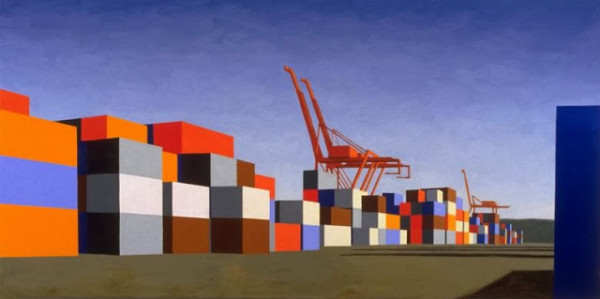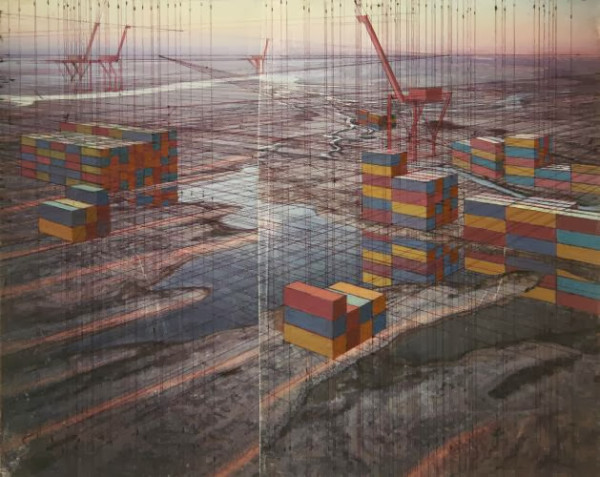Crows are numerous and newsworthy in Seattle. Widely published research from University of Washington wildlife biologist John Marzluff demonstrates the social birds remembering human faces and teaching other crows to recognize these people. Dr. Marzluff’s work builds on studies that show crows as capable of manipulating tools. Seattle artist Buster Simpson has found in the intelligent city bird a kindred spirit. Like the crow, Simpson is a scavenger who combs the streets, practically and humorously repurposing much of what he finds in the urban landscape.

Buster Simpson, The Crow’s Nest, photo documentation of the agitprop performance, 1980. Image courtesy of John Holmberg and Seattle Met Magazine.
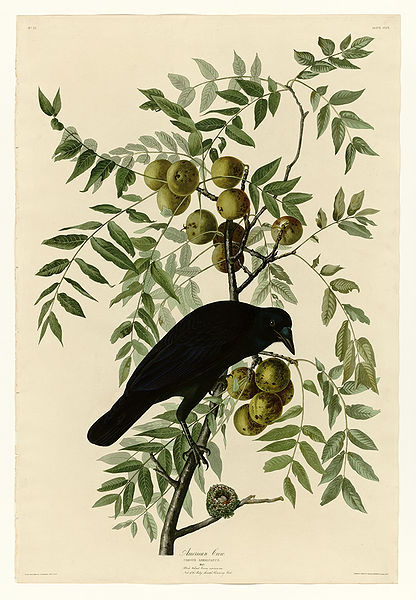
American Crow, Plate 156 of John James Audubon’s Birds of America, rare book, 1827-1838. Image courtesy of Wikimedia Commons.
But Seattle is also home to other notable birds. At the Seattle Art Museum’s Olympic Sculpture Park, Alexander Calder’s Eagle stands on high ground, looking out across the Puget Sound to the jagged silhouette of the Olympic Mountains. Calder’s Eagle has been a migratory bird, coming to the northwest by way of a bank plaza habitat in Forth Worth and then to the Philadelphia Museum of Art’s front entrance. But Eagle is not a mobile, the moving sculpture constellations Calder is so famous for. Instead, its perch is steady, motionless.

Alexander Calder’s Eagle at twilight, painted steel, 1971. Image courtesy of Sunset Magazine; photograph by Benjamin Benschneider.
Farther south in Seattle, a siege of cranes gather at water’s edge adjacent to and across from the soon-to-be-defunct Alaskan Way Viaduct, where the Duwamish Waterway empties into Elliott Bay. Construction cranes have taken up temporary residence in Seattle neighborhoods undergoing rapid urban development, like the University District and South Lake Union, where many can now be seen decked out in their holiday finery. But shipping cranes have a more fixed place in the city landscape. They are working birds, not an abstracted flight of fancy like Calder’s beautiful creature. Although they are large and many share Eagle’s orange coloring, they are distinct in that they move, bending their powerful jibs to hoist colorful containers carrying goods from around the world. With their long necks and tall legs, their resemblance to the birds whose name they share is remarkable.
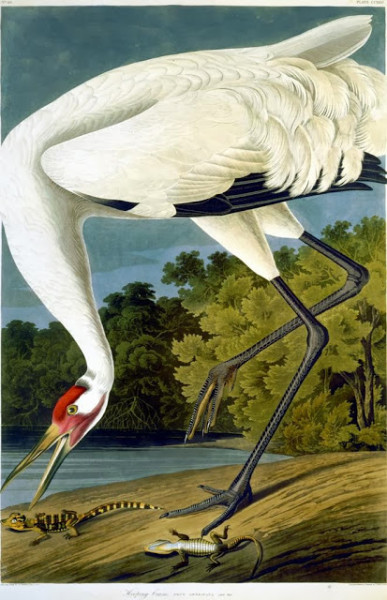
Hooping Crane, Plate 226 of John James Audubon’s Birds of America, rare book, 1827-1838. Image courtesy of Wikimedia Commons.
The natural history of these Seattle shipping cranes is a story of bust and boom, labor and industry, and globalization. Following a period of decline after World War II, the Port of Seattle modernized its practices, redesigning its terminals to accept standardized, stackable containers. To service this sleek freight, the port built new cranes, powerful machines that would accommodate the increased trade volumes that resulted.
This Seattle bird has captivated Mary Iverson, an artist who bases her practice in Seattle’s Ballard neighborhood but teaches up north at Skagit Valley College in Mount Vernon. In her 2000 painting T18 Containers, shipping cranes stand in the distance like proud, alert animals watching attentively for incoming provisions. By Iverson’s 2006 Across, these once serene creatures have multiplied. The sleek lines of their bodies extend horizontally, working in concert (or is it competition?) in ways the viewer is too close, too engulfed to comprehend.
And in a still more recent work, Desert, the cranes have morphed into dinosaurs, lording over a territory bereft of topography and color. Only the stacked building block containers answer the birds’ scale and luster. A matrix of perspectival lines relate the neat mountains of cargo to each other and the tall birds but overwhelm the sinuous path of the river and the corresponding curves of the coastlines below. These meandering shapes resemble the oxbows of Seattle’s Duwamish River before it was moved, straightened, and deepened to accommodate industry in the early years of the twentieth century.
In the early 1820s, naturalist and painter John James Audubon set out to catalogue every bird in North America. If Audubon’s work expresses the encyclopedic impulse of his age, the desire to travel, describe, and know frontier America and its fauna, the works of these twentieth- and twenty-first-century artists speak to other preoccupations, other goals. Simpson’s pieces about crows are a kind of admiring mimicry, positing that we might find answers to our own environmental troubles by observing and emulating the thrift of this city bird. Calder, a mechanical engineer by training, has adopted the materials of industry to capture something abstract and organic for his Olympic Sculpture Park Eagle. And Iverson’s practice holds up the shipping crane as a mirror. The reflections we see reveal a troubling view and an increasingly alienated and abstracted relationship with our environment.
None of theirs is art for the birds.
